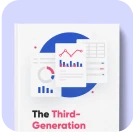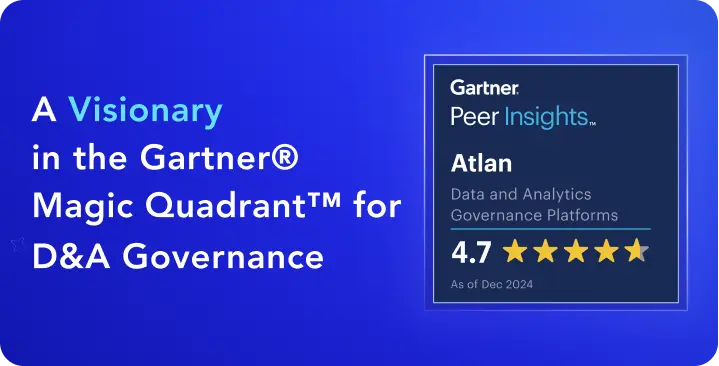How to Connect a Change Data Capture Tool With Apache Kafka?

Share this article
Using a change data capture (CDC) tool with Apache Kafka helps enhance data management and streaming capabilities. A change data capture tool captures changes in data (like inserts, updates, and deletes) in real time from databases.
Apache Kafka is a distributed streaming platform used for building real-time data pipelines and streaming applications. Integrating a change data capture tool with Apache Kafka will be beneficial for efficiently processing and managing real-time data streams, enabling scalable and reliable data synchronization between various systems and applications.
Modern data problems require modern solutions - Try Atlan, the data catalog of choice for forward-looking data teams! 👉 Book your demo today
Table of contents #
- Why should you use a change data capture tool with Apache Kafka?
- Apache Kafka overview
- What is change data capture?
- Implementation strategy for a change data capture tool
- Guidelines for effective implementation
- Change data capture for Apache Kafka: Related reads
Why should you use a change data capture tool with Apache Kafka? #
Implementing a change data capture tool is beneficial for several reasons. Let’s look at the some of them shortly.
- Real-time data synchronization: Ensures that changes in source databases are instantly reflected in target systems.
- Efficiency in data processing: Minimizes the resources required by focusing only on changed data, not the entire dataset.
- Improved data quality: Helps in maintaining accurate and up-to-date data across various systems.
- Support for advanced analytics: Facilitates timely data availability for analytics and decision-making processes, leveraging the most current information.
Apache Kafka overview #
Apache Kafka is an open-source platform for distributed event streaming, used for data pipelines, analytics, and critical applications.
It excels in scalability, high throughput, and durability, providing efficient data storage and processing. Additionally, it supports stream processing, and diverse client languages, and integrates with various systems.
What is change data capture? #
Change data capture is a technique used to identify and capture changes made to data in a database.
- It focuses on the changes made - such as inserts, updates, and deletes - rather than processing the entire data set.
- This method is efficient for real-time data integration and replication, as it reduces the amount of data needing to be transferred and processed.
- Change data capture is pivotal for businesses that require up-to-date data for analytics, reporting, and decision-making processes.
- It ensures that only the modified data is captured and processed, enabling more efficient and timely data management.
Implementation strategy for a change data capture tool #
In this section, let’s understand the steps and mistakes involved in the implementation of a change data capture tool with Apache Kafka.
Steps to be followed: #
- Performance and scalability:
- Assess how well the tool scales with increasing data volumes and velocity.
- Evaluate the performance under peak data loads.
- Fault tolerance and reliability:
- Check for the tool’s ability to handle system failures without data loss.
- Consider its recovery mechanisms and durability.
- Integration capabilities:
- Ensure the tool integrates smoothly with existing systems and databases.
- Look for compatibility with various data formats and sources.
- Security features:
- Review the security protocols and compliance standards supported.
- Prioritize data encryption and access controls.
- Ease of use and maintenance:
- Consider the complexity of setup and ongoing maintenance.
- Look for user-friendly interfaces and good documentation.
- Cost-Effectiveness:
- Compare the total cost of ownership, including licensing, support, and operational costs.
- Align with budget constraints and ROI expectations.
Commonly missed aspects #
- Underestimating the need for robust monitoring and logging.
- Overlooking long-term maintenance and support requirements.
Making a business case #
- Highlight the impact on operational efficiency and real-time data availability.
- Demonstrate potential ROI through improved decision-making and system responsiveness.
- Present a risk assessment comparing the costs of implementation versus potential losses due to data inconsistencies or operational inefficiencies.
Guidelines for effective implementation #
When implementing a change data capture tool with Apache Kafka, you might make several mistakes. Now, let’s look at some of the most common mistakes to be avoided.
- Underestimating complexity: Failing to grasp the intricacies of source and target systems can lead to improper setup.
- Scalability oversight: Not planning for scalability can result in performance bottlenecks.
- Inadequate monitoring: Overlooking the need for robust monitoring may cause undetected issues, affecting data integrity.
- Poor error management: Lack of effective error handling strategies can disrupt continuous and accurate data replication.
Avoiding these pitfalls is crucial for a successful CDC implementation with Apache Kafka.
Implementing change data capture using Kafka Connect and the Kafka Streams library #
Kafka CDC (Change Data Capture) involves capturing database changes (like inserts, updates, and deletes) and streaming them in real-time using Apache Kafka. This is achieved by configuring source connectors in Kafka Connect to pull change events from databases, which are then streamed to Kafka topics.
These changes can be consumed and processed by Kafka Streams, a Java library within the Kafka ecosystem designed for building scalable streaming applications. Kafka Streams allows for complex operations on this data, such as filtering, transformations, and aggregations, enabling real-time data processing and analytics.
This combination of Kafka Connect for ingestion and Kafka Streams for processing forms a powerful, distributed system for robust real-time data integration and insights.
Change data capture for Apache Kafka: Related reads #
- Apache Kafka documentation
- How to crawl Apache Kafka
- How to set up Apache Kafka
- How to Implement Change Data Capture with Azure Synapse Analytics?
- How to Implement a Data Discovery Tool With Kafka?
Share this article











